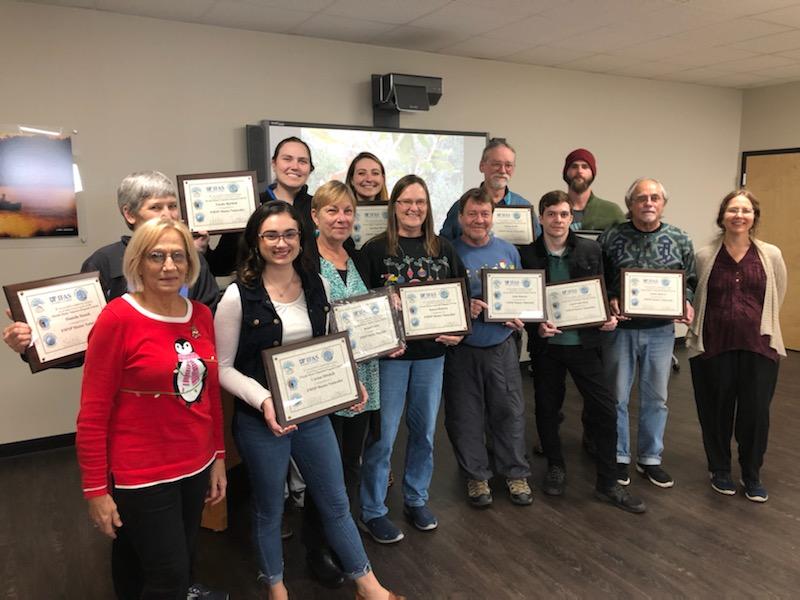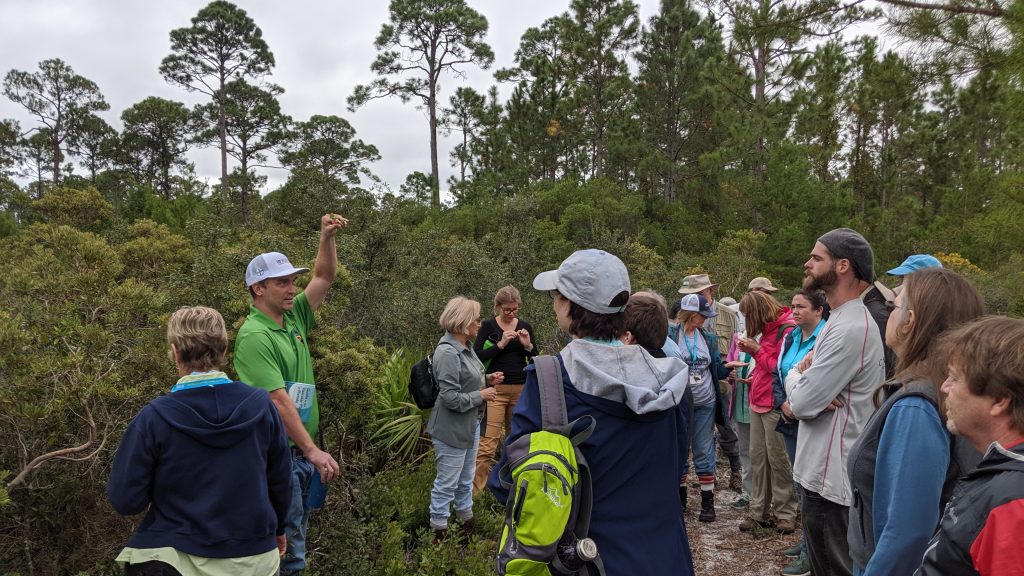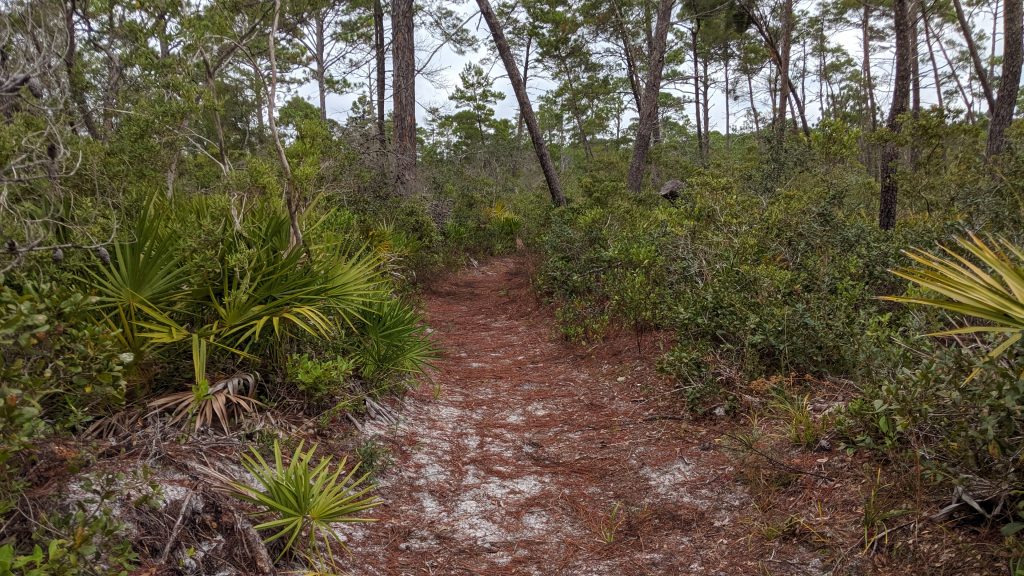My final Florida Master Naturalist Program course is coming to a close. As we cheer for our fellow graduates and hug goodbye, I reflect on what we’ve learned and what’s at stake for Florida’s land and water.
Across the state, development threatens our remaining natural lands and the species that depend on them. Near where I live in Tallahassee, new apartment buildings go up every day, and a massive toll road is slated to go through neighboring Monticello. Slain wildlife like snakes, turtles, raccoons, and owls are common sights on the road to the coast. We are killing our state.
In Central Florida, Orlando and Tampa are expanding towards each other, draining wetlands to build new homes and roads, and in turn, endangering the water resources we need to survive. In South Florida, there are few parks or wild places left, and even those are filled with invasive plants and animals. Westward, our coasts are plagued by red tide.
Throughout my Master Naturalist courses, we’ve learned this universal truth: everything is connected. Water runs off our farms and roads to our swamps and marshes, which hold and purify the water as it ascends to the aquifer. From here, humans pump that water (sometimes too much) for our uses. When we flush or drain that water, it may empty into a septic tank and re-enter the aquifer. This fragile system sustains us, and yet we take it for granted by bulldozing natural areas and paving over wetlands. Without plentiful land to hold and filter water, our natural systems cannot support our continued use. Without legislative action, we cannot conserve our resources. Period.
I fear that the development we’ve seen racing along our coasts will soon move inward, threatening rural holdouts and wildlife corridors. While we’ve irreparably damaged much of the ecosystems in our urban areas like Miami, Fort Lauderdale, and Orlando, our rural areas are still saveable. Places like Blue Head and Hendrie ranches for example – both listed as Remaining Gems near Lake Okeechobee – are threatened daily with the prospect of development. The families that have managed these ranches for decades face a decision to keep up the business or sell to thick-pocketed developers. With full Florida Forever funding, especially for the Rural and Family Lands Protection Program, we can purchase the land rights of ranches like these and conserve them for our water, wildlife, and health. It makes economic and ecological sense to conserve these lands. Working ranches allow cattle production while holding landowners to a management standard. These sprawling landscapes (Blue Head and Hendrie make up 50,000 acres) hold water as it heads south to the Everglades and ascends underground to recharge our aquifer. Lands like these are essential for highly mobile species like Florida panther, gopher tortoise, and eastern indigo snake. If we lose the opportunity to purchase these lands through conservation easements, we may see them paved for parking space and plastered with residential housing and strip malls.
We’ve highlighted many of these yet-to-be-conserved projects in our Gems Report. I invite you to explore these wild places and urge your Legislators to advocate for full Florida Forever funding.
At the end of the day, we all leave a legacy. Personally, the Florida Master Naturalist Program has set me up for a life full of learning and has reignited my curiosity for all things outdoors. I hope that these blogs have taught you some fun facts and have reminded you of the magnificent scientific wonders in our state. As I hope it has for you, this knowledge has put a fire in my belly to save these lands and the species that inhabit them. I hope that you too share that passion and vision for Florida’s future and join me in putting pressure on our elected officials to act with urgency.

Class of 2020 Master Naturalist Program Graduates 
The group visits Tate’s Hell State Forest near Carrabelle


